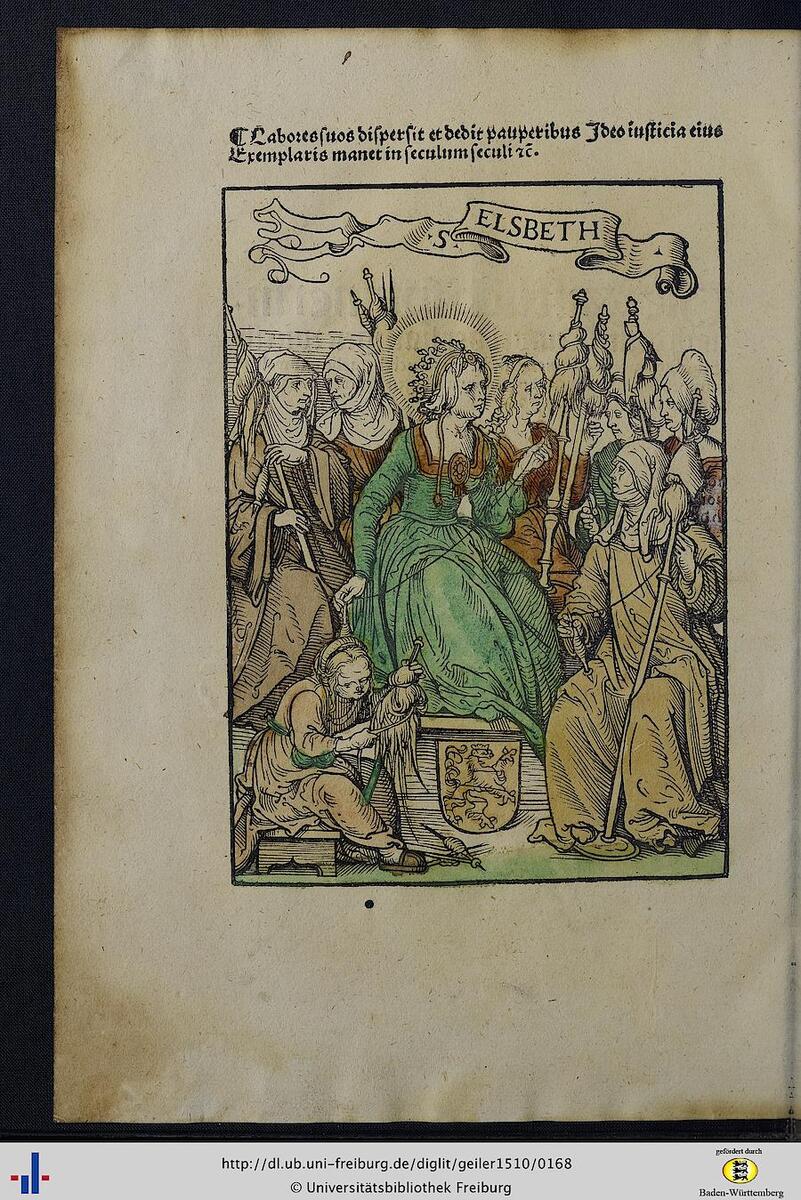Source

Source: Hans Baldung Grien, St. Elizabeth Spinning, colored woodcut, 1510. From Johann Geiler von Kaysersberg, Das Buch Granatapfel, Augsburg, 1510. http://dl.ub.uni-freiburg.de/diglit/geiler1510/0168
Hans Baldung Grien’s woodcut of Saint Elizabeth of Hungary (or of Thuringia) depicts the saint spinning wool for the poor. Spinning was both an essential part of local early modern economies and a symbol of charity and modesty. At the same time, because spinning enabled some women to earn money independently, the image of women spinning wool sometimes reflected contemporary anxieties about “spinsters,” or unmarried women, and the threat they posed to sexual morality, male economic dominance through the guilds that dominated clothmaking, and social order. This image of orderly and saintly women originally appeared in Johann Geiler von Kaysersberg's treatise Das Buch Granatapfel first printed in 1510. It provides a useful counterpoint to another famous woodcut featuring women from the artist, “Witches’ Coven,” also of 1510.

Source: Hans Baldung Grien, St. Elizabeth Spinning, colored woodcut, 1510. From Johann Geiler von Kaysersberg, Das Buch Granatapfel, Augsburg, 1510. http://dl.ub.uni-freiburg.de/diglit/geiler1510/0168
Universitätsbibliothek Freiburg